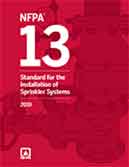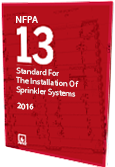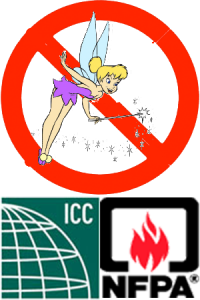 On September 28th this seminar sponsored by the State Fire Marshal Division and Fire Marshals Association of Minnesota for the 2022 Annual Minnesota Fire Marshals Conference will provide a basic understanding of the hazards associated with the operation of marijuana growing and processing facilities. The seminar is targeted towards fire and building inspectors, fire prevention officers and professionals. Discussed will be the latest fire and building codes and regulations. Read more…
On September 28th this seminar sponsored by the State Fire Marshal Division and Fire Marshals Association of Minnesota for the 2022 Annual Minnesota Fire Marshals Conference will provide a basic understanding of the hazards associated with the operation of marijuana growing and processing facilities. The seminar is targeted towards fire and building inspectors, fire prevention officers and professionals. Discussed will be the latest fire and building codes and regulations. Read more…
 On November 13th in Carlsbad, CA, KnA will present a seminar on requirements contained in Chapter 32, High-Piled Combustible Storage of the 2019 Edition of the California Fire Code (CFC). We will discuss existing and new fire codes of the CFC and their references to NFPA 13 2016 (NFPA 13 2019). Read more…
On November 13th in Carlsbad, CA, KnA will present a seminar on requirements contained in Chapter 32, High-Piled Combustible Storage of the 2019 Edition of the California Fire Code (CFC). We will discuss existing and new fire codes of the CFC and their references to NFPA 13 2016 (NFPA 13 2019). Read more…
 On October 4th in San Diego, CA, K&A will present a course on basic requirements contained in Chapter 32, High-Piled Combustible Storage of the International Fire Code (IFC) and NFPA 13 2019 Edition. Smoke and heat vents in context of sprinkler protection will be reviewed along with aisle and maximum storage dimension requirements. Discussions also include IFC requirements for protecting storage and their effect on sprinkler system specification. Read more…
On October 4th in San Diego, CA, K&A will present a course on basic requirements contained in Chapter 32, High-Piled Combustible Storage of the International Fire Code (IFC) and NFPA 13 2019 Edition. Smoke and heat vents in context of sprinkler protection will be reviewed along with aisle and maximum storage dimension requirements. Discussions also include IFC requirements for protecting storage and their effect on sprinkler system specification. Read more…
 The new layout of NFPA 13 may be beneficial for new users of the standard, but it can also create confusion and dismay for experienced users as they will have to search and relocate familiar regulations and determine how these new, sometimes reworded and reformatted sections, tables, and paragraphs relate to each other. This is especially true when looking at the new in-rack Chapter 25 of NFPA 13. After using the new standard for some time now, and Chapter 25 in particular, which left me wondering on more than one occasion, I feel a need to share my experiences and observations concerning this steep learning curve. Here is a summary of my conclusions on the reformat. Read more…
The new layout of NFPA 13 may be beneficial for new users of the standard, but it can also create confusion and dismay for experienced users as they will have to search and relocate familiar regulations and determine how these new, sometimes reworded and reformatted sections, tables, and paragraphs relate to each other. This is especially true when looking at the new in-rack Chapter 25 of NFPA 13. After using the new standard for some time now, and Chapter 25 in particular, which left me wondering on more than one occasion, I feel a need to share my experiences and observations concerning this steep learning curve. Here is a summary of my conclusions on the reformat. Read more…
 Based on the recent successful fire test of 50-ft rack storage in single and double row racks with cartoned unexpanded Group A Plastics (and encapsulated/ unencapsulated Class I–IV commodities), FM Global approved a new type of ESFR sprinkler for high-challenge storage applications, the ESFR K-28. It is approved as a ceiling-only, quick-response, wet-pipe, pendent storage sprinkler. Read more…
Based on the recent successful fire test of 50-ft rack storage in single and double row racks with cartoned unexpanded Group A Plastics (and encapsulated/ unencapsulated Class I–IV commodities), FM Global approved a new type of ESFR sprinkler for high-challenge storage applications, the ESFR K-28. It is approved as a ceiling-only, quick-response, wet-pipe, pendent storage sprinkler. Read more…
 Explore with us in this article the do’s and don’ts of using ESFR sprinkler systems. We discuss common pitfalls in applying these types of sprinkler systems and provide detailed explanations on their correct usage including applicable codes and regulations. Presented are the latest updates on this subject matter based on the 2013 and 2016 editions of NFPA 13, FM Global Property Loss Prevention Data Sheets, and relevant results from the latest fire tests with ESFR sprinkler systems. Read more…
Explore with us in this article the do’s and don’ts of using ESFR sprinkler systems. We discuss common pitfalls in applying these types of sprinkler systems and provide detailed explanations on their correct usage including applicable codes and regulations. Presented are the latest updates on this subject matter based on the 2013 and 2016 editions of NFPA 13, FM Global Property Loss Prevention Data Sheets, and relevant results from the latest fire tests with ESFR sprinkler systems. Read more…
 In recent years, there has been a marked increase in the deployment of various types of battery technologies for use in Energy Storage Systems (ESS). Code enforcing bodies, such as local Authorities Having Jurisdiction (AHJs), are asked to successfully address risks associated with these new battery technologies. However, there is little or no guidance and direction on how to deal with associated hazards, or more specifically, on how to review a successful fire protection approach. Read more…
In recent years, there has been a marked increase in the deployment of various types of battery technologies for use in Energy Storage Systems (ESS). Code enforcing bodies, such as local Authorities Having Jurisdiction (AHJs), are asked to successfully address risks associated with these new battery technologies. However, there is little or no guidance and direction on how to deal with associated hazards, or more specifically, on how to review a successful fire protection approach. Read more…
 The proposed changes to the 2016 edition of NFPA 13, Standard for the Installation of Sprinkler Systems, were published after the Tech Session at the 2015 NFPA Conference & Expo at the McCormick Place in Chicago. Major changes adopted included extensive revisions to the commodity classification tables, the first in two decades. For the first time in NFPA 13’s history protection schemes for Group A exposed expanded plastics stored in racks were added. Read more…
The proposed changes to the 2016 edition of NFPA 13, Standard for the Installation of Sprinkler Systems, were published after the Tech Session at the 2015 NFPA Conference & Expo at the McCormick Place in Chicago. Major changes adopted included extensive revisions to the commodity classification tables, the first in two decades. For the first time in NFPA 13’s history protection schemes for Group A exposed expanded plastics stored in racks were added. Read more…
 There is a better in good chance that the Globally Harmonized System (GHS) will impact your business. Current fire and building codes are based on NFPA standards, which – in some cases – differ from GHS regulations. With the start of key implementation deadlines already behind us, businesses must be aware of the differences and key requirements between these two sets of regulations in order to successfully adapt to this change. Read more…
There is a better in good chance that the Globally Harmonized System (GHS) will impact your business. Current fire and building codes are based on NFPA standards, which – in some cases – differ from GHS regulations. With the start of key implementation deadlines already behind us, businesses must be aware of the differences and key requirements between these two sets of regulations in order to successfully adapt to this change. Read more…
 According to OSHA and the U.S. Chemical Safety Board1 over the last 35 years more than 450 accidents involving dust have killed nearly 130 workers and injured more than 800. Between the years of 2008 and 2012 alone, a total of 50 combustible dust accidents2 occurred resulting in 29 fatalities and 161 injuries. Given these grim statistics, a lot of attention and effort has been spent over recent years on highlighting the risks of combustible dust, educating the public, and developing non-disruptive, cost-effective solutions that ensure life safety in the workplace Read more…
According to OSHA and the U.S. Chemical Safety Board1 over the last 35 years more than 450 accidents involving dust have killed nearly 130 workers and injured more than 800. Between the years of 2008 and 2012 alone, a total of 50 combustible dust accidents2 occurred resulting in 29 fatalities and 161 injuries. Given these grim statistics, a lot of attention and effort has been spent over recent years on highlighting the risks of combustible dust, educating the public, and developing non-disruptive, cost-effective solutions that ensure life safety in the workplace Read more…
 On September 28th this seminar sponsored by the State Fire Marshal Division and Fire Marshals Association of Minnesota for the 2022 Annual Minnesota Fire Marshals Conference will provide a basic understanding of the hazards associated with the operation of marijuana growing and processing facilities. The seminar is targeted towards fire and building inspectors, fire prevention officers and professionals. Discussed will be the latest fire and building codes and regulations. Read more…
On September 28th this seminar sponsored by the State Fire Marshal Division and Fire Marshals Association of Minnesota for the 2022 Annual Minnesota Fire Marshals Conference will provide a basic understanding of the hazards associated with the operation of marijuana growing and processing facilities. The seminar is targeted towards fire and building inspectors, fire prevention officers and professionals. Discussed will be the latest fire and building codes and regulations. Read more…












